
Spotlight on Rare Succulents to Bring to Your Next Swap

Introduction
Succulents have been taking the gardening world by storm for several years now. Their alluring shapes, stunning colors, and low-maintenance requirements make them the perfect choice for both novice and seasoned plant enthusiasts. However, with thousands of succulent varieties available, some are rarer than others, making them particularly desirable among collectors. Rare succulents can serve as exceptional conversation starters and coveted additions to anyone's plant collection. This article will explore various rare succulent species to consider bringing to your next swap event, complete with care tips, propagation methods, and the reasons they might make great gifts for fellow gardeners.
In the sections that follow, we will dive into what qualifies a succulent as “rare,” discuss the numerous benefits of incorporating these unique plants into your collection, and present a well-curated list of rare succulent varieties. For those already familiar with succulents, we’ll also touch on propagation techniques and care methods for these unique plants to ensure they remain healthy and thrive for years to come. Whether you’re a seasoned succulent aficionado or just starting your collection, you’ll discover valuable insights to enhance your next swap experience.
Understanding Rare Succulents
What Makes a Succulent "Rare"?
The term rare succulent can be somewhat subjective; however, it generally refers to succulent species that are either hard to find in commercial markets or possess specific growing requirements that make them less commonly cultivated. Factors that can contribute to a succulent being classified as rare include limited availability due to geographic distribution, specific climate needs, or the plants' susceptibility to disease and pests that hinder their growth.
For example, species native to specific environments such as deserts or remote islands may not be widely available to the general public. Additionally, some rarer succulents may only reproduce in certain conditions or take a long time to mature, which limits propagation efforts. Understanding what defines rare succulents can help collectors identify exciting opportunities for unique additions to their collections.
The Allure of Collecting Rare Succulents
For many plant lovers, collecting rare succulents is akin to gathering treasure; each plant carries its unique story, origin, and charm. Rare succulents often stand out due to their uncommon shapes or vibrant colors. They can inspire marvel and curiosity, drawing praise from those who witness them. Each rare succulent acts as a living piece of art, contributing diversity to the plant collection and making it a captivating focal point in any indoor or outdoor display.
Moreover, the rare species usually attract specific communities of enthusiasts who are eager to share knowledge and expertise regarding their cultivation and care. This open exchange of information can boost your confidence as a gardener and offer the chance to learn new techniques for horticultural success. Additionally, passionate plant collectors often find camaraderie in their shared interest, whether through local groups, social media, or succulent events. As a result, engaging in rare succulent collecting can lead to enriching experiences and long-lasting friendships among fellow enthusiasts.
Benefits of Including Rare Succulents in Your Swap
Bringing rare succulents to a swap event can elevate the entire experience for everyone involved. First and foremost, gift giving is often seen as thoughtful and generous, and offering rare plants as gifts elevates this sentiment. Participants at a swap will appreciate receiving items that are unique and hard to find, which further enhances the spirit of sharing and community. Not only does it promote goodwill, but it also allows you to showcase your expertise in curating unique selections for your fellow gardeners.
 How to Identify Plant Health for Successful Reverse Swapping
How to Identify Plant Health for Successful Reverse SwappingMoreover, rare succulents can spark intriguing discussions among plant lovers, fueling exchanges about propagation techniques, care tips, and best practices. Sharing knowledge about different succulent varieties helps foster a welcoming atmosphere and cultivates a rich learning experience for everyone involved. This exchange can lead to valuable networking opportunities, enabling you to connect with individuals who share similar interests.
Lastly, featuring rare succulents in your swap can effectively increase your collection. By exchanging these unique plants with others, participants have the chance to acquire species they may not have encountered otherwise. This creates an exciting cycle of trading that ultimately enriches everyone’s collection, especially for those who value the rarity and beauty of succulent plants.
Notable Rare Succulent Varieties
1. Haworthia truncata
Haworthia truncata, often referred to as "Window Plant", is revered for its captivating leaf structure. This succulent features chunky leaves that are flat on top and have a frosted appearance, which is a result of its translucent leaf tips. The way the leaves are arranged allows for efficient sunlight absorption while providing a form of plant camouflage in its native habitat of South Africa.
Care for Haworthia truncata includes ensuring plenty of bright but indirect light, as too much direct sunlight can scorch the leaves. The plant thrives in well-draining soil, typically a cactus or succulent mix. Irregular watering is vital; allow the soil to dry out between watering sessions. Its unique appearance makes it an extraordinary addition to any collection and a delightful conversation starter at swap events.
2. Echeveria ‘Lola’
Echeveria ‘Lola’ is a visually stunning succulent variety known for its striking rosettes and lovely lavender coloration. This cultivar is a hybrid that boasts smooth, fleshy leaves arranged in a tight, symmetrical rosette. As the plant matures, it develops slightly trailing stems that can produce offsets, allowing for propagation.
Echeveria ‘Lola’ thrives in bright, indirect light and prefers well-draining soil. Watering should be conducted carefully; allow the soil to dry completely before re-watering the plant. Additionally, this succulent can be vulnerable to rot if overwatered, emphasizing the importance of proper care. Echeveria ‘Lola’ can be a beautiful addition to any collection and is much sought-after for its elegant nature.
3. Aloe polyphylla
Aloe polyphylla, commonly known as the Spiral Aloe, is an awe-inspiring succulent native to the high-altitude regions of Lesotho in Southern Africa. This fascinating plant is frequently admired for its unique spiraling leaf formation, which gives it a sculptural appearance that beckons attention. Its leaves are rigid and can exhibit stunning red or pink margins when exposed to sunlight, creating a dynamic and colorful display.
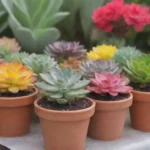 Fun Themes for Your Upcoming Succulent Swap Gatherings
Fun Themes for Your Upcoming Succulent Swap GatheringsTo care for Aloe polyphylla, provide full sun for optimal growth, and ensure it is planted in well-draining soil to prevent root rot. Water your Spiral Aloe generally once the soil has completely dried out, as this plant is more tolerant of drought than excessive moisture. Its extraordinary appearance and rarity make it a prized possession in any succulent collection, ensuring it will captivate audiences at your next swap event.
Techniques for Propagating Rare Succulents
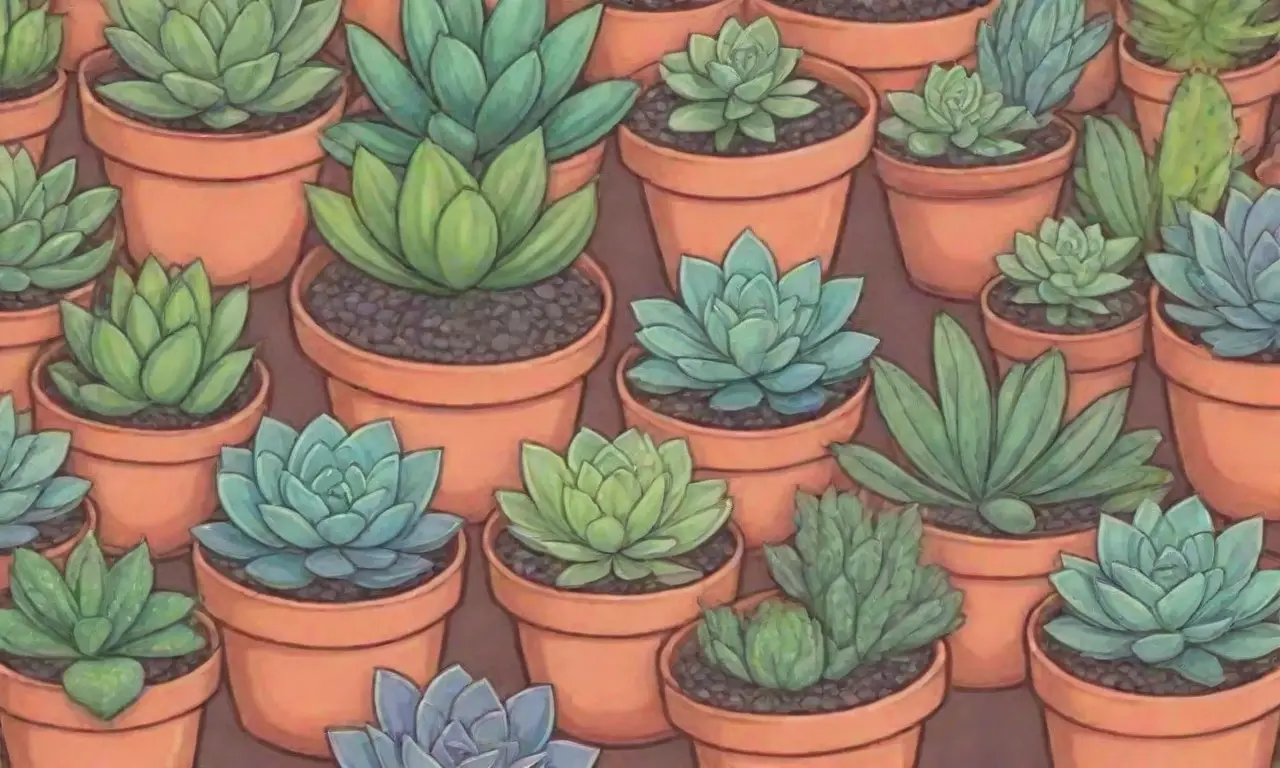
Understanding Propagation Methods
Propagating rare succulents can vary significantly based on the specific plant species; however, most often, they can be propagated through leaf cuttings, offsets, or seeds. Understanding which method works best for your specific succulent can maximize your chances of successful growth. Leaf cuttings are commonly used for propagating species like Echeveria, while offsets are a more suitable option for succulents like Haworthia and Aloe.
Seeds can be utilized for less common varieties, adding an element of excitement and responsibility to the propagation process. Since many rare succulents can take time to mature, be patient and provide the necessary care to encourage growth. By mastering propagation techniques, you can create more plants to share at your swap.
Essential Tips for Successful Propagation
When propagating succulents, you must ensure you’re using a clean and sharp cutting tool to avoid infections. Once you’ve taken your cuttings, lay them out in a warm, dry area for a few days to allow a callus to form over the cut end. This reduces the risk of rot when the cuttings are placed in the soil.
Use a suitable propagation medium such as a cactus or succulent mix, and make sure the containers have holes for proper drainage. Water sparingly at first, gradually increasing as roots develop. The key is to monitor the moisture level and avoid overly wet conditions, which can be detrimental to the plant’s success.
Lastly, familiarity with your specific succulent's needs, including light, temperature, and humidity preferences, is crucial during propagation. By creating an ideal environment, you can increase your probability of success and generate rare succulents to bring and trade at your next swap event.
 Growing Your Succulent Collection Through Effective Swapping
Growing Your Succulent Collection Through Effective SwappingConclusion
In the world of gardening, rare succulents have carved out a niche that captivates the hearts of plant enthusiasts across the globe. With their striking appearances, fascinating growth habits, and diverse care requirements, these unique plants offer both beauty and the thrill of discovery. By understanding what constitutes a rare succulent and the value of including them in your collection and trade events, you're well on your way to enriching your horticultural experience.
As you prepare for your next succulent swap, consider adding rare varieties like Haworthia truncata, Echeveria ‘Lola’, or Aloe polyphylla to your toolbox of offerings. Not only will you be sharing exquisite plants, but you'll also be providing fellow gardeners with opportunities to expand their own collections with unique additions. The excitement of discussing, sharing, and crafting community connections through these rare beauties only enhances the experience for all involved.
In summary, embracing rare succulents serves as a gateway to a vibrant world of plants filled with unexpected treasures and boundless possibilities. With the right care and attention, these plants can thrive and bring joy to your collection as well as those in your gardening community. So gather your rare succulents, prepare for knowledge exchanges, and make your upcoming swap event a delightful experience for everyone involved!
If you want to read more articles similar to Spotlight on Rare Succulents to Bring to Your Next Swap, you can visit the Succulent swaps category.


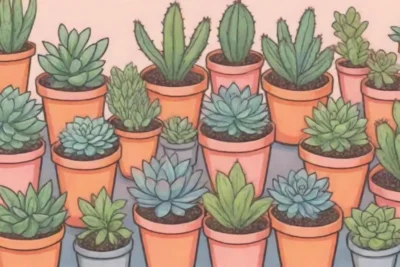
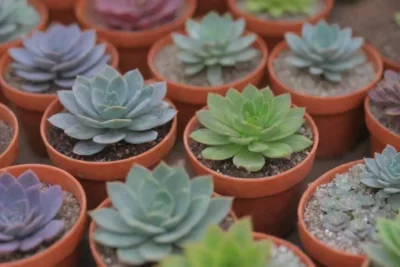
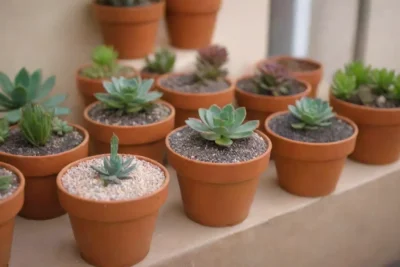
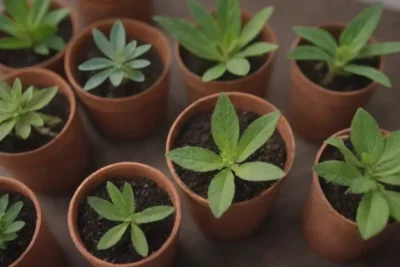
You Must Read